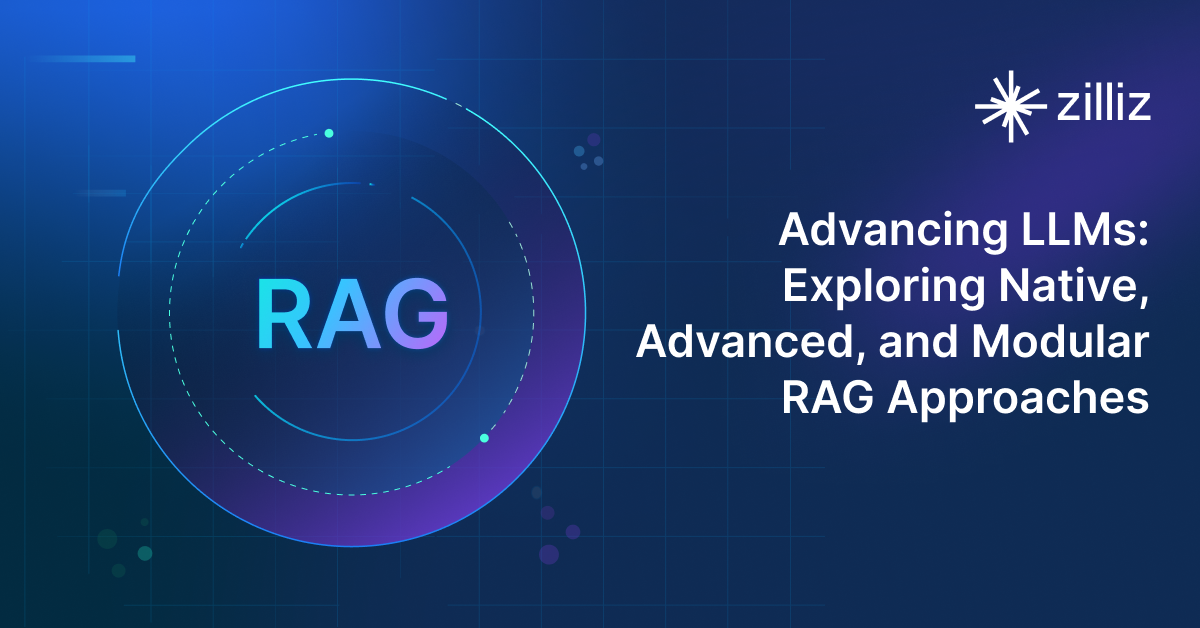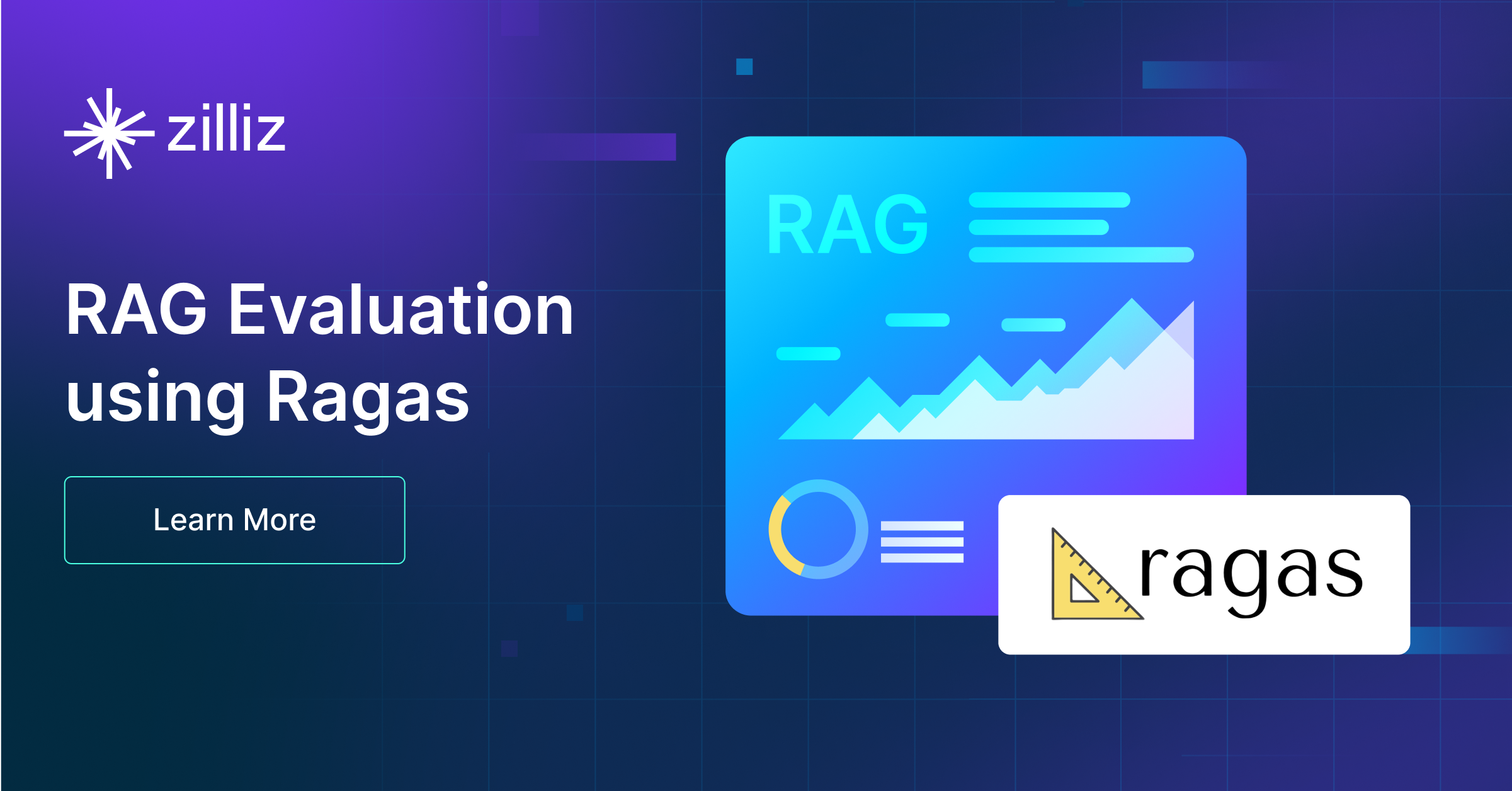Build RAG Chatbot with LangChain, OpenSearch, Groq Qwen2.5 32B Instruct, and Cohere embed-english-light-v2.0
Introduction to RAG
Retrieval-Augmented Generation (RAG) is a game-changer for GenAI applications, especially in conversational AI. It combines the power of pre-trained large language models (LLMs) like OpenAI’s GPT with external knowledge sources stored in vector databases such as Milvus and Zilliz Cloud, allowing for more accurate, contextually relevant, and up-to-date response generation. A RAG pipeline usually consists of four basic components: a vector database, an embedding model, an LLM, and a framework.
Key Components We'll Use for This RAG Chatbot
This tutorial shows you how to build a simple RAG chatbot in Python using the following components:
- LangChain: An open-source framework that helps you orchestrate the interaction between LLMs, vector stores, embedding models, etc, making it easier to integrate a RAG pipeline.
- OpenSearch: An open-source search and analytics suite derived from Elasticsearch. It offers robust full-text search and real-time analytics, with vector search available as an add-on for similarity-based queries, extending its capabilities to handle high-dimensional data. Since it is just a vector search add-on rather than a purpose-built vector database, it lacks scalability and availability and many other advanced features required by enterprise-level applications. Therefore, if you prefer a much more scalable solution or hate to manage your own infrastructure, we recommend using Zilliz Cloud, which is a fully managed vector database service built on the open-source Milvus and offers a free tier supporting up to 1 million vectors.)
- Groq Qwen2.5 32B Instruct: Groq Qwen2.5 is a large-scale AI language model designed for instruction-following tasks. With 32 billion parameters, it excels in generating coherent, contextually relevant responses and understanding complex queries. Ideal for applications in customer service, content creation, and educational tools, it enhances user interactions through its robust and adaptable capabilities.
- Cohere embed-english-light-v2.0: This lightweight embedding model is designed for efficient English text encoding, providing high-quality representations for various natural language processing tasks. It excels in scenarios requiring embedding generation with minimal computational resources, such as document similarity, clustering, and recommendation systems, ensuring fast performance without compromising accuracy.
By the end of this tutorial, you’ll have a functional chatbot capable of answering questions based on a custom knowledge base.
Note: Since we may use proprietary models in our tutorials, make sure you have the required API key beforehand.
Step 1: Install and Set Up LangChain
%pip install --quiet --upgrade langchain-text-splitters langchain-community langgraph
Step 2: Install and Set Up Groq Qwen2.5 32B Instruct
pip install -qU "langchain[groq]"
import getpass
import os
if not os.environ.get("GROQ_API_KEY"):
os.environ["GROQ_API_KEY"] = getpass.getpass("Enter API key for Groq: ")
from langchain.chat_models import init_chat_model
llm = init_chat_model("qwen-2.5-32b", model_provider="groq")
Step 3: Install and Set Up Cohere embed-english-light-v2.0
pip install -qU langchain-cohere
import getpass
import os
if not os.environ.get("COHERE_API_KEY"):
os.environ["COHERE_API_KEY"] = getpass.getpass("Enter API key for Cohere: ")
from langchain_cohere import CohereEmbeddings
embeddings = CohereEmbeddings(model="embed-english-light-v2.0")
Step 4: Install and Set Up OpenSearch
pip install --upgrade --quiet opensearch-py langchain-community
from langchain_community.vectorstores import OpenSearchVectorSearch
opensearch_vector_search = OpenSearchVectorSearch(
"http://localhost:9200",
"embeddings",
embedding_function
)
Step 5: Build a RAG Chatbot
Now that you’ve set up all components, let’s start to build a simple chatbot. We’ll use the Milvus introduction doc as a private knowledge base. You can replace it with your own dataset to customize your RAG chatbot.
import bs4
from langchain import hub
from langchain_community.document_loaders import WebBaseLoader
from langchain_core.documents import Document
from langchain_text_splitters import RecursiveCharacterTextSplitter
from langgraph.graph import START, StateGraph
from typing_extensions import List, TypedDict
# Load and chunk contents of the blog
loader = WebBaseLoader(
web_paths=("https://milvus.io/docs/overview.md",),
bs_kwargs=dict(
parse_only=bs4.SoupStrainer(
class_=("doc-style doc-post-content")
)
),
)
docs = loader.load()
text_splitter = RecursiveCharacterTextSplitter(chunk_size=1000, chunk_overlap=200)
all_splits = text_splitter.split_documents(docs)
# Index chunks
_ = vector_store.add_documents(documents=all_splits)
# Define prompt for question-answering
prompt = hub.pull("rlm/rag-prompt")
# Define state for application
class State(TypedDict):
question: str
context: List[Document]
answer: str
# Define application steps
def retrieve(state: State):
retrieved_docs = vector_store.similarity_search(state["question"])
return {"context": retrieved_docs}
def generate(state: State):
docs_content = "\n\n".join(doc.page_content for doc in state["context"])
messages = prompt.invoke({"question": state["question"], "context": docs_content})
response = llm.invoke(messages)
return {"answer": response.content}
# Compile application and test
graph_builder = StateGraph(State).add_sequence([retrieve, generate])
graph_builder.add_edge(START, "retrieve")
graph = graph_builder.compile()
Test the Chatbot
Yeah! You've built your own chatbot. Let's ask the chatbot a question.
response = graph.invoke({"question": "What data types does Milvus support?"})
print(response["answer"])
Example Output
Milvus supports various data types including sparse vectors, binary vectors, JSON, and arrays. Additionally, it handles common numerical and character types, making it versatile for different data modeling needs. This allows users to manage unstructured or multi-modal data efficiently.
Optimization Tips
As you build your RAG system, optimization is key to ensuring peak performance and efficiency. While setting up the components is an essential first step, fine-tuning each one will help you create a solution that works even better and scales seamlessly. In this section, we’ll share some practical tips for optimizing all these components, giving you the edge to build smarter, faster, and more responsive RAG applications.
LangChain optimization tips
To optimize LangChain, focus on minimizing redundant operations in your workflow by structuring your chains and agents efficiently. Use caching to avoid repeated computations, speeding up your system, and experiment with modular design to ensure that components like models or databases can be easily swapped out. This will provide both flexibility and efficiency, allowing you to quickly scale your system without unnecessary delays or complications.
OpenSearch optimization tips
To optimize OpenSearch in a Retrieval-Augmented Generation (RAG) setup, fine-tune indexing by enabling efficient mappings and reducing unnecessary stored fields. Use HNSW for vector search to speed up similarity queries while balancing recall and latency with appropriate ef_search and ef_construction values. Leverage shard and replica settings to distribute load effectively, and enable caching for frequent queries. Optimize text-based retrieval with BM25 tuning and custom analyzers for better relevance. Regularly monitor cluster health, index size, and query performance using OpenSearch Dashboards and adjust configurations accordingly.
Groq Qwen2.5 32B Instruct optimization tips
To optimize the Groq Qwen2.5 32B Instruct model in a Retrieval-Augmented Generation (RAG) setup, consider implementing mixed precision training to reduce memory usage and enhance throughput. Fine-tune hyperparameters such as learning rate and batch size based on your dataset to improve performance. Utilize efficient indexing methods for retrieval components to speed up query responses. Additionally, cache frequent queries and responses to minimize redundant computations. Regularly assess model performance on validation data to identify any degradation over time, allowing for timely retraining or adjustments. Lastly, leverage data augmentation techniques to enrich your training dataset, which can help the model generalize better across unseen queries.
Cohere embed-english-light-v2.0 optimization tips
Cohere embed-english-light-v2.0 is designed for faster, more resource-efficient embedding generation in English-language tasks. To optimize processing, preprocess text by removing stopwords, punctuation, and unnecessary formatting to minimize the complexity of the input. Leverage vector compression techniques, such as quantization or PCA, to reduce storage requirements without sacrificing significant accuracy. For retrieval, implement hybrid search strategies that combine keyword search with dense vector search to achieve faster and more relevant results. Use multi-threading or parallel processing to handle large batches of embeddings efficiently. Apply caching for frequently queried embeddings to minimize re-processing and reduce query latency, especially for high-traffic RAG systems.
By implementing these tips across your components, you'll be able to enhance the performance and functionality of your RAG system, ensuring it’s optimized for both speed and accuracy. Keep testing, iterating, and refining your setup to stay ahead in the ever-evolving world of AI development.
RAG Cost Calculator: A Free Tool to Calculate Your Cost in Seconds
Estimating the cost of a Retrieval-Augmented Generation (RAG) pipeline involves analyzing expenses across vector storage, compute resources, and API usage. Key cost drivers include vector database queries, embedding generation, and LLM inference.
RAG Cost Calculator is a free tool that quickly estimates the cost of building a RAG pipeline, including chunking, embedding, vector storage/search, and LLM generation. It also helps you identify cost-saving opportunities and achieve up to 10x cost reduction on vector databases with the serverless option.
 Calculate your RAG cost
Calculate your RAG cost
What Have You Learned?
By diving into this tutorial, you’ve unlocked the power to build a sophisticated RAG system from the ground up! You learned how LangChain acts as the glue, seamlessly orchestrating the flow of data between components. OpenSearch, your vector database superhero, stores and retrieves context-rich embeddings generated by Cohere’s lightning-fast embed-english-light-v2.0 model, ensuring your system finds the exact information needed. Then, Groq’s Qwen2.5 32B Instruct steps in as the brainy LLM, synthesizing those retrieved snippets into coherent, human-like answers. Together, these tools form a dynamic pipeline where LangChain’s flexibility, OpenSearch’s scalability, Cohere’s precision, and Groq’s speed combine to create something truly magical—like a well-oiled machine that thinks, learns, and responds!
But wait, there’s more! You also picked up pro tips for optimizing your RAG pipeline, like tuning retrieval thresholds and balancing cost-performance tradeoffs. The tutorial even threw in a free RAG cost calculator to help you estimate expenses as you scale—because innovation shouldn’t break the bank. Now that you’ve seen how these pieces fit together, imagine the possibilities: chatbots that answer like experts, research tools that dig deeper, or creative assistants that spark new ideas. This is just the beginning! Grab your code editor, experiment with different models and datasets, and start building your own RAG-powered marvels. The future of intelligent apps is in your hands—go make it happen! 🚀
Further Resources
🌟 In addition to this RAG tutorial, unleash your full potential with these incredible resources to level up your RAG skills.
- How to Build a Multimodal RAG | Documentation
- How to Enhance the Performance of Your RAG Pipeline
- Graph RAG with Milvus | Documentation
- How to Evaluate RAG Applications - Zilliz Learn
- Generative AI Resource Hub | Zilliz
We'd Love to Hear What You Think!
We’d love to hear your thoughts! 🌟 Leave your questions or comments below or join our vibrant Milvus Discord community to share your experiences, ask questions, or connect with thousands of AI enthusiasts. Your journey matters to us!
If you like this tutorial, show your support by giving our Milvus GitHub repo a star ⭐—it means the world to us and inspires us to keep creating! 💖
- Introduction to RAG
- Key Components We'll Use for This RAG Chatbot
- Step 1: Install and Set Up LangChain
- Step 2: Install and Set Up Groq Qwen2.5 32B Instruct
- Step 3: Install and Set Up Cohere embed-english-light-v2.0
- Step 4: Install and Set Up OpenSearch
- Step 5: Build a RAG Chatbot
- Optimization Tips
- RAG Cost Calculator: A Free Tool to Calculate Your Cost in Seconds
- What Have You Learned?
- Further Resources
- We'd Love to Hear What You Think!
Content
Vector Database at Scale
Zilliz Cloud is a fully-managed vector database built for scale, perfect for your RAG apps.
Try Zilliz Cloud for Free


